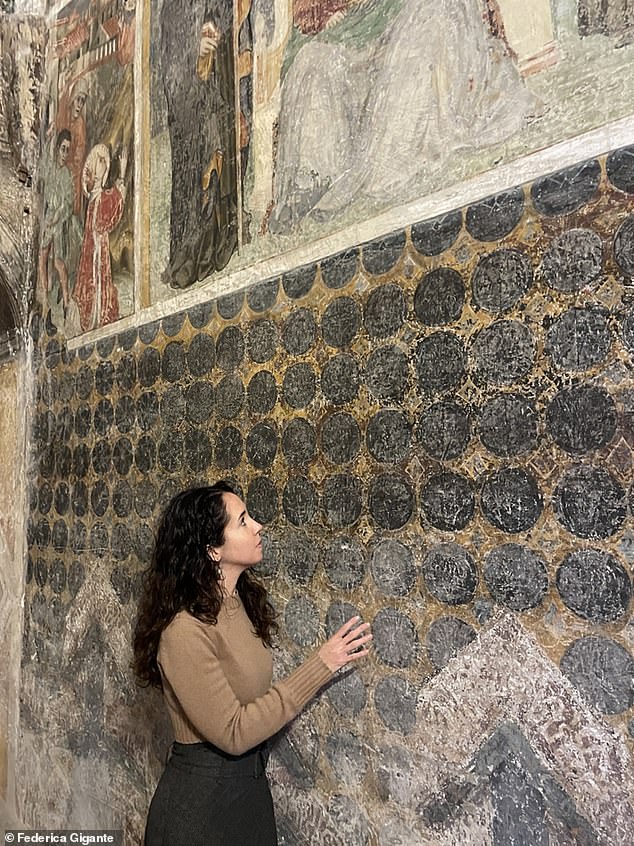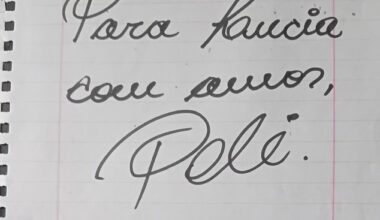They are religions which often clash today, but Islamic designs were hijacked by the Christian church in medieval times.
A study has shed light on the little-known practice of Christians ‘repurposing’ ornate Islamic textiles – like the priestly robe worn by the most important bishop in England, Thomas Becket.
Examining a 700-year-old fresco depicting an Islamic tent in an Italian church, the research describes how Christian soldiers seized these tents from Islamic enemies on the battlefield as the spoils of war.
But they were also sent to Europe as gifts in diplomacy – such as one sent to the first Holy Roman emperor, Charlemagne, by the sultan featured in the famous Arabian Nights story, Harun al-Rashid.
The study was sparked by the rediscovery of a fresco within the Benedictine convent church of S. Antonio in Polesine, Ferrara, depicting a luxurious blue and gold Islamic tent which may have been a gift from no less than Pope Innocent IV.
The tent itself likely hung over the altar – perhaps as a reminder of Christians’ victory over Muslim foes in many medieval wars, and to conceal the male priest from the eyes of celibate nuns.
Dr Federica Gigante, a historian from Cambridge University, who led the study, said: ‘Tents, especially Islamic royal tents were among the most prized gifts in diplomatic exchanges, the most prominent royal insignia on campsites and the most sought-after spoils on battlefields.’
She added: ‘We can’t be certain but it is possible that a person of high-profile such as Pope Innocent IV gifted the tent.’

The 700-year-old fresco is thought to be the only surviving image of its kind, offering precious evidence of a little-known Christian practice – using Islamic tents to conceal high altars


The partially-visible fresco almost certainly depicts a real tent, now lost, which the artist may have seen in the same church. The brightly coloured original tent, covered in jewels, could have been a trophy seized from the battlefield. A high-profile figure such as Pope Innocent IV (right) may have eventually gifted the tent to the church
Highly decorated Islamic silks were so prized by the Christian world that important people, including saints and rulers, were wrapped in them for burial.
The textiles often appeared in Italian paintings of the Virgin and Child from the 13th and 14th centuries, perhaps underfoot or on the back of the Virgin Mary’s throne.
Islamic tents, often bejewelled, were important trophies from victories in the Iberian wars between the Christian north and the Muslim south, with one writer noting that they were displayed over altars so the ‘triumph of Christ’ would always be remembered by the congregation.
The fresco, examined now but previously left unstudied for centuries after being painted over with scenes from the lives of Jesus and the Virgin Mary, depicts a tent in the royal colours of blue and gold.
This is similar to the peacock and elephant-covered tent believed to have been cut up and made into the Fermo chasuble – the famous robe worn by St Thomas Becket when he was leading Mass in the years before his murder.
The tent in the fresco has a bejewelled canopy and decorative quasi-Arabic script which resembles the word ‘Allah’.
Researchers say such Islamic items were simply ‘readapted’ for Christian use.
Louis IX even sent an Islamic tent he owned to the grandson of warrior Genghis Khan in the 13th century.

The fresco was painted between the late 13th and early 14th centuries to represent a canopy placed over the high altar

Federica Gigante (pictured) with the fresco depicting the tent. She said: ‘Islamic textiles were associated with the Holy Land from where pilgrims and crusaders brought back the most precious such Islamic textiles’
The research, published in The Burlington Magazine, suggests that a high-profile figure like Pope Innocent IV, who gifted several precious textiles to the Benedictine convent church of S. Antonio, may have sent the tent.
But it may also have been a trophy of war, with Dr Gigante adding: ‘Tents made their way into Europe as booty.
‘During anti-Muslim expeditions, it was common to pay mercenaries in textiles and a tent was the ultimate prize.
‘The fresco matches descriptions of royal Islamic tents which were seized during the wars of Christian expansion into al-Andalus in the 13th century.’
The tent may have been part of altar curtains, made up of four pieces of cloth called a ’tetravela’.
If the tent itself was only used for special occasions like Lent, then the fresco depicting it may have been painted to remind people of its splendour at other times.
Dr Gigante said: ‘Many people don’t realise how extraordinarily advanced and admired Islamic culture was in the medieval period.’
Source link






